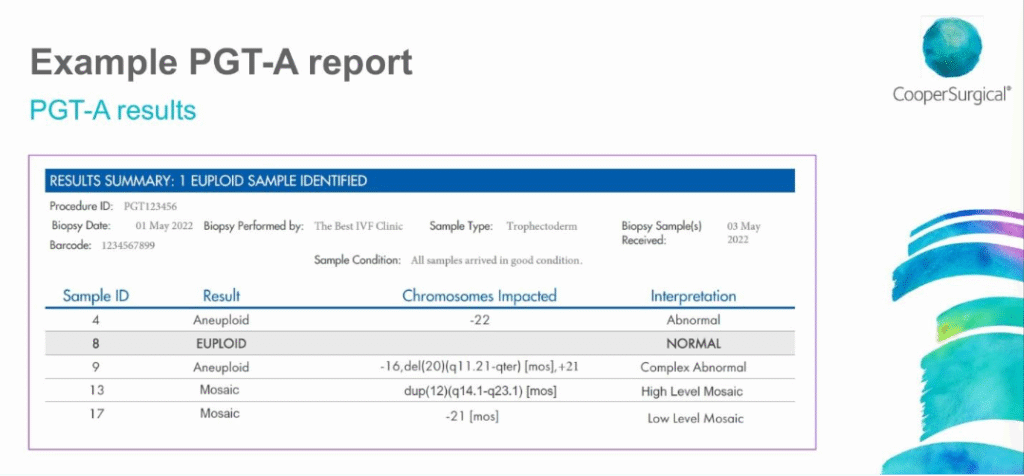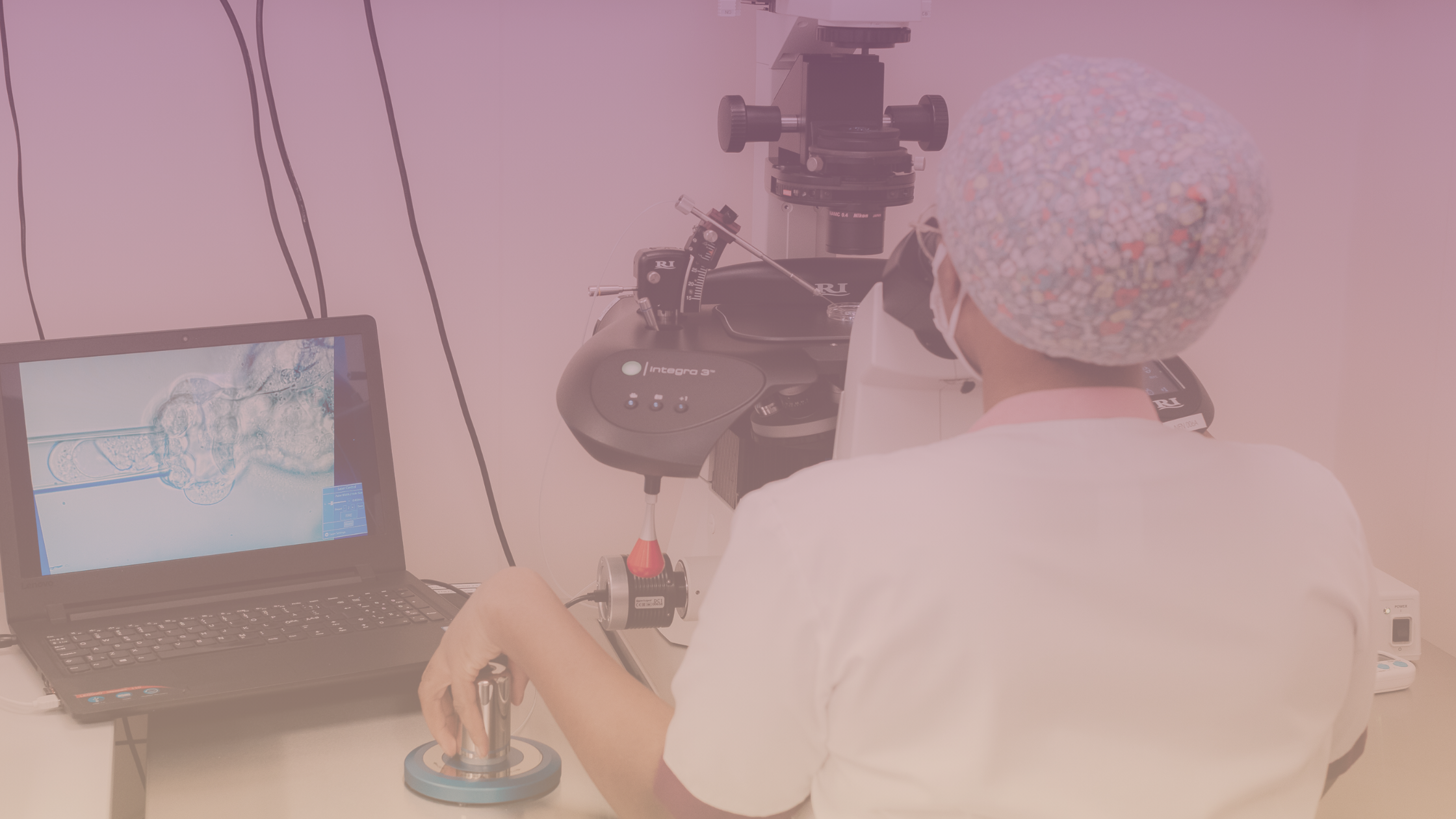For many women undergoing IVF, one of the biggest challenges is the uncertainty of whether implantation will be successful. Embryo biopsy has been offered in our clinic since 2023. Our goal is to identify embryos with the best chance of leading to a healthy pregnancy.
What is PGT-A?
PGT-A is a test that checks whether an embryo has the correct number of chromosomes (euploid) or not (aneuploid).
- On day 5 or 6 of embryo development, a few cells are carefully removed from a blastocyst.
- These cells are sent to a genetics lab for analysis.
- The embryos are frozen while results are processed (around 2 weeks).
- If at least one healthy embryo is confirmed, preparations for a frozen embryo transfer can begin.
- This process reduces the chance of transferring embryos that cannot implant or would ultimately result in miscarriage.

All the Stats
At our clinic in 2024:
- 33 IVF cycles included embryo biopsies
- 139 blastocysts were tested
- 4 embryos were re-biopsied (i.e biopsy was performed 2 times)
- Between 1 and 8 embryos were sent per patient
- The average number of embryos per test was 4
Why Patient Age Matters
A common question is: “How many eggs do I need for PGT-A to work?”
Research shows:
- Women under 35 need ~4 mature eggs to produce 1 healthy embryo.
- Women around 42 may need ~20 mature eggs for 1 healthy embryo.
Unfortunately, older women often have lower ovarian reserve, so the odds per cycle are slim-mer. To improve chances, many choose to batch embryos across multiple cycles before testing. It is important to set the expectations realistically with patients.

When batching cycles, it is important to freeze the embryos at the morula stage (on day 4 of development) because this makes the biopsy procedure smoother for the Embryologists AND causes less stress to the embryos after thawing
The Reports
From all the embryos tested in 2024:
- 50% were genetically abnormal
- 3.6% of embryos returned with “no result” (cells didn’t make it into the testing tube)
- 3.6% were “non-informative” (DNA couldn’t be accurately analyzed)
- 34% of patients who chose PGT had no normal embryos available for transfer

The Results
- 30 frozen embryo transfers with euploid embryos were performed
- 57% of those transfers resulted in a clinical pregnancy per embryo transfer procedure (confirmed by fetal sac on 6-week ultrasound)
Our patients who benefited from PGT last year were women 35 and over using their own eggs:
- 35–39 years of age: 80% clinical pregnancy rate with PGT (vs 29% without PGT).
- ≥40 year of age: 80% clinical pregnancy rate with PGT (vs 19% without PGT).
This was one of the first years we’ve seen higher success rates in women over 40 — giving new hope for patients in this age category in our clinic.
Why We Don’t Transfer Aneuploid Embryos
Studies show aneuploid embryos have almost no reproductive potential. A trial of 102 aneu-ploid embryo transfers resulted in 0 live births (Tiegs et al. 2020). Other studies are also showing 0-1% chance of a healthy live birth when an aneuploid embryo is transferred.
The risks are:
- Failed implantation
- Miscarriage
- Birth of a child with genetic abnormality
For these reasons, knowingly transferring aneuploid embryos is considered unethical.
Important reminder: Even with PGT, a healthy embryo does not guarantee a pregnancy or live birth. Around 45% of our current PGT pregnancies are ongoing — other factors such as hormones, uterine environment, and immune response still play a role in implantation and continuation of the pregnancy.
Embryo Selection
When choosing the first embryo to transfer, Embryologists look at:
- Morphology (how the embryo looks under the microscope over culture for 5–6 days).
- AI-generated developmental scores (CHLOE) based on implantation potential.
- Notes from fertilization, biopsy, and freezing.
However, even the “best-looking” embryo may not be genetically normal — which is why PGT results take priority in selection.
Key Takeaways
- In our clinic, PGT improves the IVF success rates for women aged 35 and over.
- PGT shortens the path to pregnancy by avoiding transfers of embryos with no potential.
We are pleased to state almost all biopsied embryos expanded nicely after being thawed before transfer (and thus survived the biopsy procedure!).

